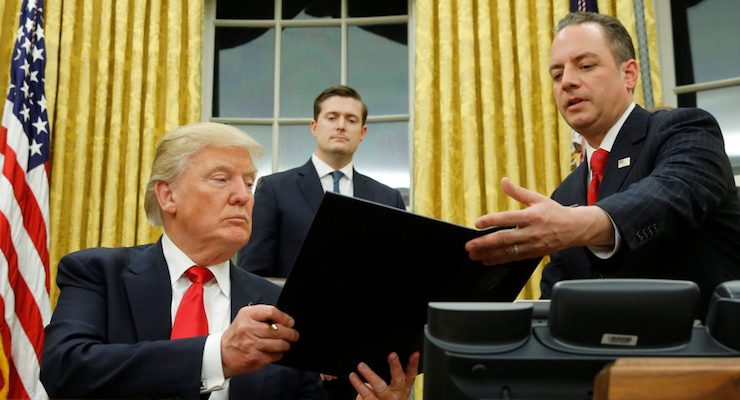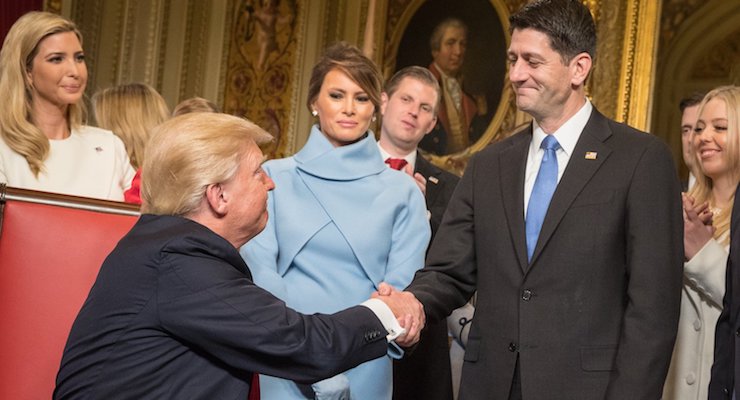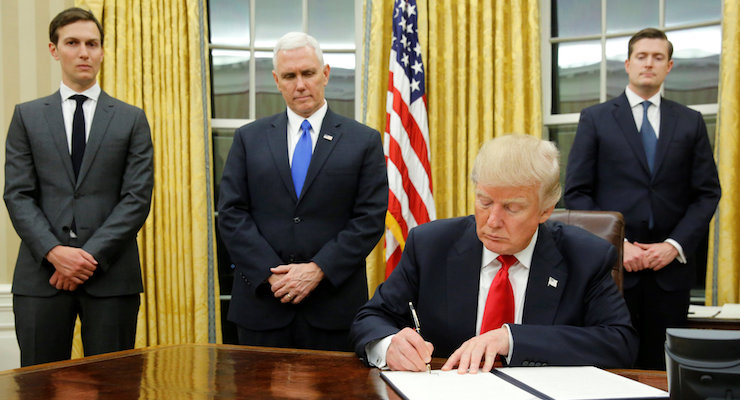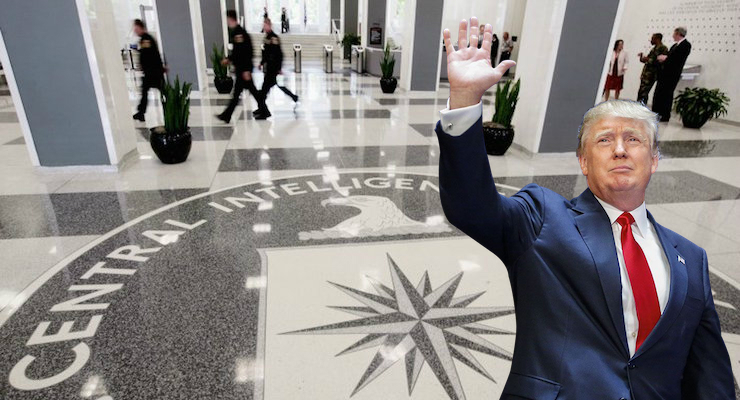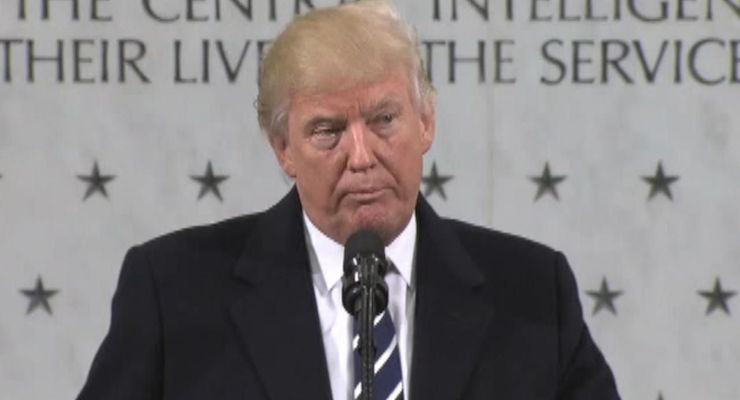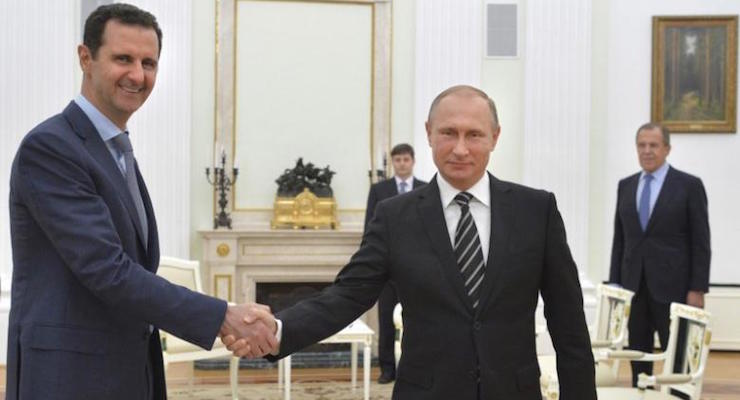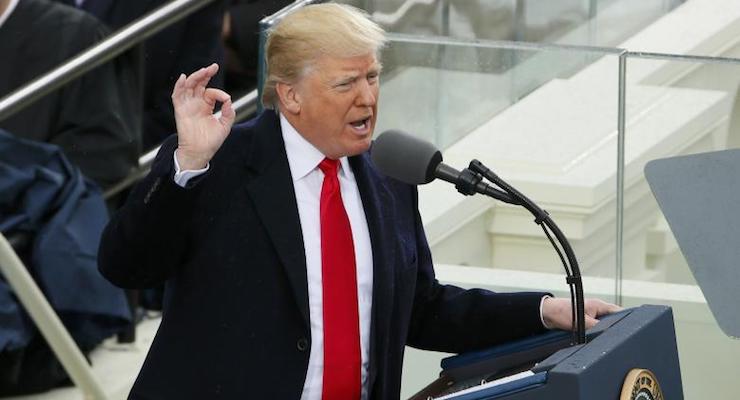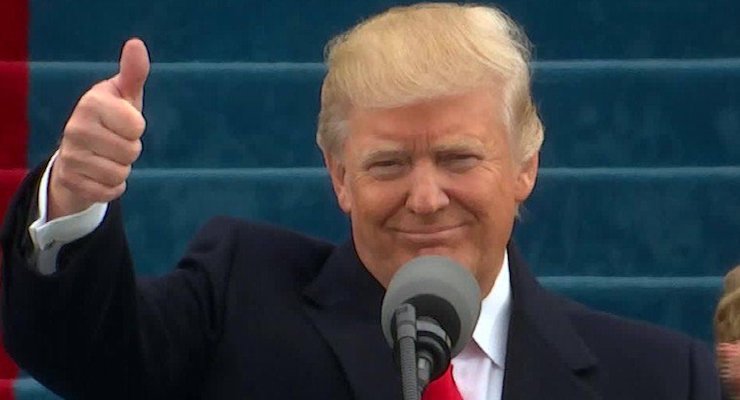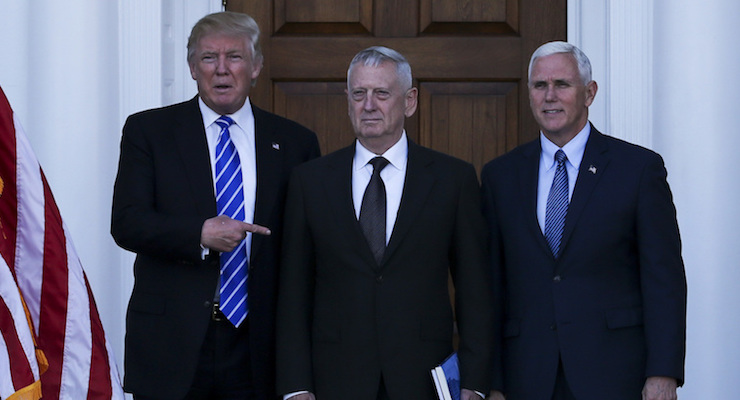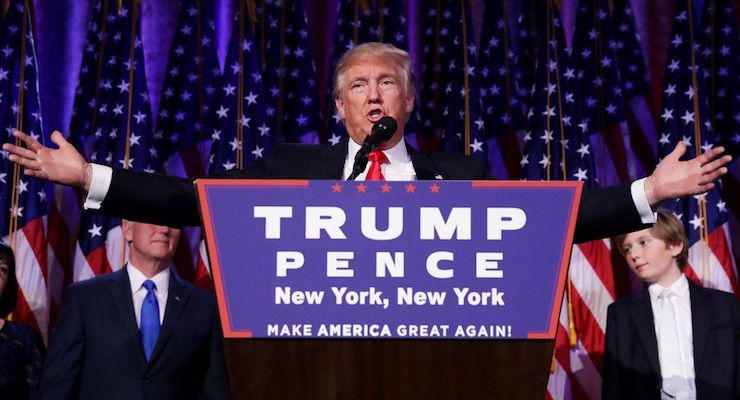
NOVEMBER 8, 2016: Then-President-Elect Donald J. Trump speaks to supporters on Election Night in New York York City. (Photo: Associated Press)
Because of what he’s said on entitlements, infrastructure, child care, and other issues, I’ve been skeptical about Donald Trump.
But if recent headlines are true, I may develop a man crush.
Here’s a story from The Hill.
Donald Trump is ready to take an ax to government spending. Staffers for the Trump transition team have been meeting with career staff at the White House ahead of Friday’s presidential inauguration to outline their plans for shrinking the federal bureaucracy, The Hill has learned. The changes they propose are dramatic. The departments of Commerce and Energy would see major reductions in funding, with programs under their jurisdiction either being eliminated or transferred to other agencies.  The departments of Transportation, Justice and State would see significant cuts and program eliminations. The Corporation for Public Broadcasting would be privatized, while the National Endowment for the Arts and National Endowment for the Humanities would be eliminated entirely. Overall, the blueprint being used by Trump’s team would reduce federal spending by $10.5 trillion over 10 years. …At the Department of Justice, the blueprint calls for eliminating the Office of Community Oriented Policing Services, Violence Against Women Grants and the Legal Services Corporation and for reducing funding for its Civil Rights and its Environment and Natural Resources divisions. At the Department of Energy, it would…eliminate the Office of Electricity, eliminate the Office of Energy Efficiency and Renewable Energy and scrap the Office of Fossil Energy, which focuses on technologies to reduce carbon dioxide emissions. Under the State Department’s jurisdiction, funding for the Overseas Private Investment Corporation, the Paris Climate Change Agreement and the United Nations’ Intergovernmental Panel on Climate Change are candidates for elimination.
The departments of Transportation, Justice and State would see significant cuts and program eliminations. The Corporation for Public Broadcasting would be privatized, while the National Endowment for the Arts and National Endowment for the Humanities would be eliminated entirely. Overall, the blueprint being used by Trump’s team would reduce federal spending by $10.5 trillion over 10 years. …At the Department of Justice, the blueprint calls for eliminating the Office of Community Oriented Policing Services, Violence Against Women Grants and the Legal Services Corporation and for reducing funding for its Civil Rights and its Environment and Natural Resources divisions. At the Department of Energy, it would…eliminate the Office of Electricity, eliminate the Office of Energy Efficiency and Renewable Energy and scrap the Office of Fossil Energy, which focuses on technologies to reduce carbon dioxide emissions. Under the State Department’s jurisdiction, funding for the Overseas Private Investment Corporation, the Paris Climate Change Agreement and the United Nations’ Intergovernmental Panel on Climate Change are candidates for elimination.
This warms my heart. It might even send a thrill up my leg, to borrow a phrase from Chris Matthews.
But that’s not all.
The Washington Examiner also has a report that has me salivating.
Making good on a promise to slash government, President-elect Trump has asked his incoming team to pursue spending and staffing cuts. Insiders said that the spending reductions in some departments could go as high as 10 percent and staff cuts to 20 percent, numbers that would rock Washington if he follows through.  At least two so-called “landing teams” in Cabinet agencies have relayed the call for cuts as part of their marching orders to shrink the flab in government. …The teams also are looking at staffing cuts over four years through attrition, a hiring freeze and reorganization. The plan is winning cheers in conservative, anti-tax and anti-spending corners in Washington that have long sought massive cuts in the bureaucracy. …Trump is likely to face a wall of opposition from Democrats and federal unions who consider much of the federal workforce on their side.
At least two so-called “landing teams” in Cabinet agencies have relayed the call for cuts as part of their marching orders to shrink the flab in government. …The teams also are looking at staffing cuts over four years through attrition, a hiring freeze and reorganization. The plan is winning cheers in conservative, anti-tax and anti-spending corners in Washington that have long sought massive cuts in the bureaucracy. …Trump is likely to face a wall of opposition from Democrats and federal unions who consider much of the federal workforce on their side.
Sounds great, right?
But before getting too excited, keep in mind that these articles simply refer to options that Trump’s team is preparing. It’s still an open question whether Trump actually embraces these policies.
So my man crush is on hold until I see whether Trump actually decides to do what’s right for the nation.
But if he does, I have some very helpful three-part advice for successful fiscal policy.
- The budget is a garden.
- Counterproductive agencies, programs, and departments are like weeds in the garden.
- Don’t trim weeds, pull them out by the roots.
In other words, don’t cut programs by 10 percent, 20 percent, or even 50 percent. If you do that, it’s like cutting off a weed at ground level. If the root system is still there, it’s just a matter of time before it regrows and begins to suffocate the good plants (i.e., the private sector).
Instead, shut them down. Eliminate them. Raze the buildings. And pour a foot of salt on the ground so nothing can regrow.
Simply stated, it’s very easy to restore a budget cut at some point in the future. But if a part of government is totally wiped out, then special interests have to go through all the effort of recreating that function. And that’s not overly easy given the separation-of-powers system that the Founding Fathers wisely created.
Another advantage of killing off programs and agencies is that voters will see that they were never needed in the first place.
Get rid of the National Endowment for the Arts and people will quickly see that the hysterical claims of its supporters were nonsense.
Shut down the Department of Commerce and, other than cronyists, folks won’t even notice that it’s gone.
Cut off all funding for the Organization for Economic Cooperation and Development and the only losers will be the bureaucrats who no longer get to enjoy business-class junkets to Paris.

I’ve already identified several cabinet departments that should be terminated.
- Get rid of the Department of Housing and Urban Development.
- Shut down the Department of Agriculture.
- Eliminate the Department of Transportation.
- Abolish the Department of Education.
- Pull the plug on the Department of Energy.
- Phase out the Department of Veterans Affairs.
- Dump the Small Business Administration.
John Stossel also has a bunch of suggestions for Trump’s first week.
…there’s a lot of good Trump and Pence could do their first day, or, let’s be generous, their first week. …Monday: Abolish the Department of Commerce. …Commerce just happens; it doesn’t need a department. Today the Department of Commerce spends $9 billion a year subsidizing companies with political connections, gathering economic data, setting industry standards and doing a bunch of things companies ought to do for themselves. Get rid of it. Tuesday: Abolish the Department of Labor. The Department inserts itself into almost every protracted argument between workers and management. Why should we let government referee every argument? Let workers, bosses, unions and their lawyers fight it out. …The Labor Department also spends about $9 billion gathering information on workers. Top labor-union bosses make six-figure salaries. I’m sure their organizations could spend a little on statistics and workplace studies. Leave the poor, oppressed taxpayer out of it.
For the rest of the week, he suggests wiping out the Small Business Administration, the Department of Education, and the Department of Energy, so you can see we’re on the same wavelength.
The bottom line is that President Trump (I didn’t think I’d ever write those words) is in a position to…um, well…make America great again.
But that means pursuing a fiscal policy consistent with America’s founding principles.
I’m not expecting miracles, but it would be nice to see some semi-serious spending restraint when the dust settles. And any good results will be much more durable if they’re based on program terminations instead of haircuts.
